
The Nordic Food Lab is the brainchild of René Redzepi, the maverick chef behind the world-famous Noma restaurant and creator of such culinary delights as ‘vintage carrot’ (a carrot buried in the ground for up to two years) and ‘fish doughnuts’.
And it’s achingly trendy: based on a houseboat in Copenhagen’s hip Christianshavn neighbourhood, it’s filled with very young and very enthusiastic staff and it has plant samples taped against the window, buckets of gently flowing seaweed on the balcony and an installation of fermented meats hanging in the kitchen.
In short, the lab is exactly the sort of place you’d expect to be involved in a major project on insect cuisine.
Which is why it’s surprising to see how normal the insect-based foods are that the lab has been developing of late. If you were expecting live ants (served at Noma’s pop-up restaurant in London in 2012) or a chimp stick (a liquorice stick covered in honey, plant matter and ants, created by the lab for the Pestival insect festival earlier this year), you’d be disappointed.
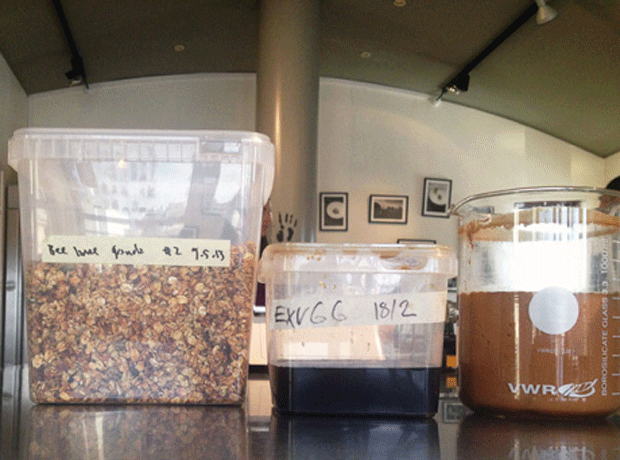
How to stop bee colony collapse? Eat bee larvae granola
Food tastes better when it’s not just delicious but has meaning.
So says Josh Evans, researcher at the Nordic Food Lab, and the lab’s bee larvae granola is a perfect example of that philosophy in action. It contains the kinds of seeds, nuts and oats you’d expect in a standard granola, but instead of being mixed with vegetable oil and sugar, bee larvae - which are naturally high in protein and high in fat - are added to bind the mixture together, together with honey.
The result? A granola that’s higher in protein and full of good, unsaturated fats, is less greasy and has a more savoury, nutty taste than normal granola, which is often overly sweet.
But it also has a great sustainability story: the larvae (all drones) are a waste product of beekeeping and the fight against the highly common varroa mite, which infests drones and can lead to colony collapse. Beekeepers can fight the mites with pesticides or through routine drone culling.
“In Denmark, drone removal is the most common method, but there are many places where it’s not,” says Evans. “If we can create a demand for bee larvae by eating them, maybe more and more beekeepers will use it instead of pesticides to manage their varroa mites.”
There are no creepy-crawlies in sight in fact, you’d struggle to find anything that looks remotely like it might contain insects. Instead, researcher Josh Evans is serving up granola - made of bee larvae -that wouldn’t seem out of place in the supermarket breakfast aisle, and a fermented grasshopper sauce with a fruity, almost oyster-like taste that looks about as intimidating as your average bottle of soy sauce.
And that’s the point, says Evans. Having just been awarded a three-year grant by the Velux Foundation to investigate how to make insects palatable to Western consumers, the Nordic Food Lab is keen to avoid either of the two extremes that currently define the discourse on entomophagy (that’s eating insects to you and me): insect-eating as freak show (those lollipops with scorpions, for instance) and insect-eating as guilt trip, fuelled by sustainability concerns in a world that’s hungry for animal protein but increasingly short of natural resources.
Third way
The lab is propagating a third way: it wants to persuade us to eat insects not because they’re a novelty or because they’re good for us and the planet, but “because they’re f***ing delicious”, as Evans puts it. “Insects are just as much a potential ingredient as any other form of meat or vegetable, but we in Western Europe and North America don’t currently recognise the potential for deliciousness from insects,” he says.
To change that, familiar formats that people already know how to use - such as granola or fermented sauces - will be key, believes Evans. “Granola, for example, is something everybody knows. It’s simple, it’s cheap and it’s delicious,” he says. “Plus, you can’t see any insects - nothing looks scary.”
Crucially, the lab wants to get away from the obsession with protein that characterises the insect-eating debate at the moment.
Yes, insects can be a great alternative source of protein - the bee larvae in the granola, for example, boost its protein content significantly above that of standard granolas - but they are so much more, Evans argues. Fermented into a sauce or miso-type paste, grasshoppers and wax moth larvae become a rich source of umami taste to enhance dishes, while ants - the flavour kings of the insect world - can act as spices, bringing bursts of zingy, citrus-like flavours.

When it comes to eating insects, the Nordic Food Lab isn’t alone in having ideas for products that could bridge the gap between familiarity and novelty - France’s Insagri, for example, is working on an insect-based flour that could be used to add protein to products such as pasta sauces, and London-based start-up Ento is taking inspiration from sushi to create insect-based snack foods that will appeal to Western consumers.
But what sets the lab apart is its track record in collaborating with large, multinational fmcg companies to get its ideas to market. In the past, it has worked with poultry supplier Rose Poultry on a “Nordic” chicken for the Scandinavian mass market, teamed up with Arla on a project involving a cheese made with seaweed, and it’s just started a major collaboration with Carlsberg’s Jacobsen division to investigate the creation of a new Northern European beer brewed with locally grown herbs such as wood avens.
There hasn’t been any commercial interest in the lab’s insect work to date (the research grant only came through in June, so it’s early days), but Evans says it would be open to collaborations here too - provided they are pursued with the right attitude. “The most important thing for us is that focus on taste, otherwise the work will be hijacked by something other than taste, like efficiency,” he adds. “We have to be very clear about that, but there are big guys in the world who have the desire to do right, and we hope to be a source of inspiration and a partner that can try to facilitate that process.”
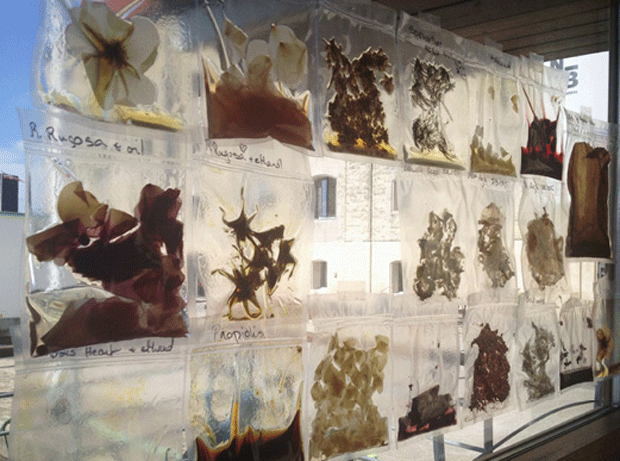
How to get involved
There will be multiple ways for fmcg companies - or anyone else interested in insect eating - to get involved in and benefit from the lab’s work over the next three years. Aside from its existing NPD strands, the lab will conduct three field trips to Africa, South America and South East Asia to research local insect gastronomies and explore new ideas for insect products, with scientific papers to be written on each. Online media company Vice will be producing short documentaries on the trips, and the lab plans to publish a full-length film and a book on the entire project at the end.
In addition, it is pursuing a number of scientific projects to further the cause of entomophagy - it’s working with the University of Copenhagen to research the microbiological and food safety aspects of eating insects, and will be looking to spend a large proportion of its time on analysing and cataloguing the flavour profiles found in different insects using sensory and chemical analysis.
“The most important thing for us is that focus on taste”
Josh Evans
Open source
It’s the kind of work that might unearth a new insect-based natural flavouring for use in food manufacturing - and, crucially, it will all be open-source and available to the public free of charge.
“A lot of this knowledge may already exist, but if it does it’s privately owned and locked away somewhere,” says Evans. “The amount of knowledge on insect flavours that exists in the public domain is very limited - we’ll be putting it out in the world for free to share it.”
What the world - especially the West - ultimately decides to do with that knowledge, of course, remains to be seen. An estimated two billion people around the world already eat insects, but there’s no doubt that it will take a lot of convincing to get Europeans and North Americans to join them.
Having said that, the bee larvae granola and fermented grasshopper sauce developed by the Nordic Food Lab are unexpectedly delicious, and they have a great story to tell. If the researchers at the lab can strike the right partnerships with gutsy, ambitious food companies willing to take a risk, you wouldn’t bet against them developing an insect-based product that really can conquer the mainstream.
Food industry - the ball is in your court.








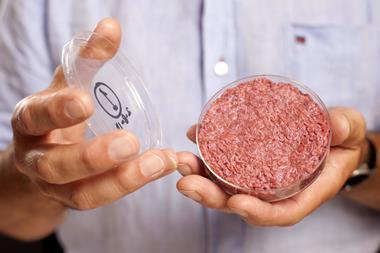
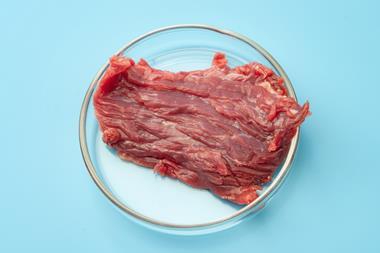
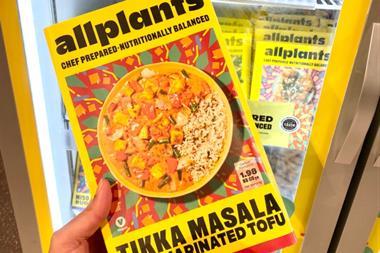







No comments yet